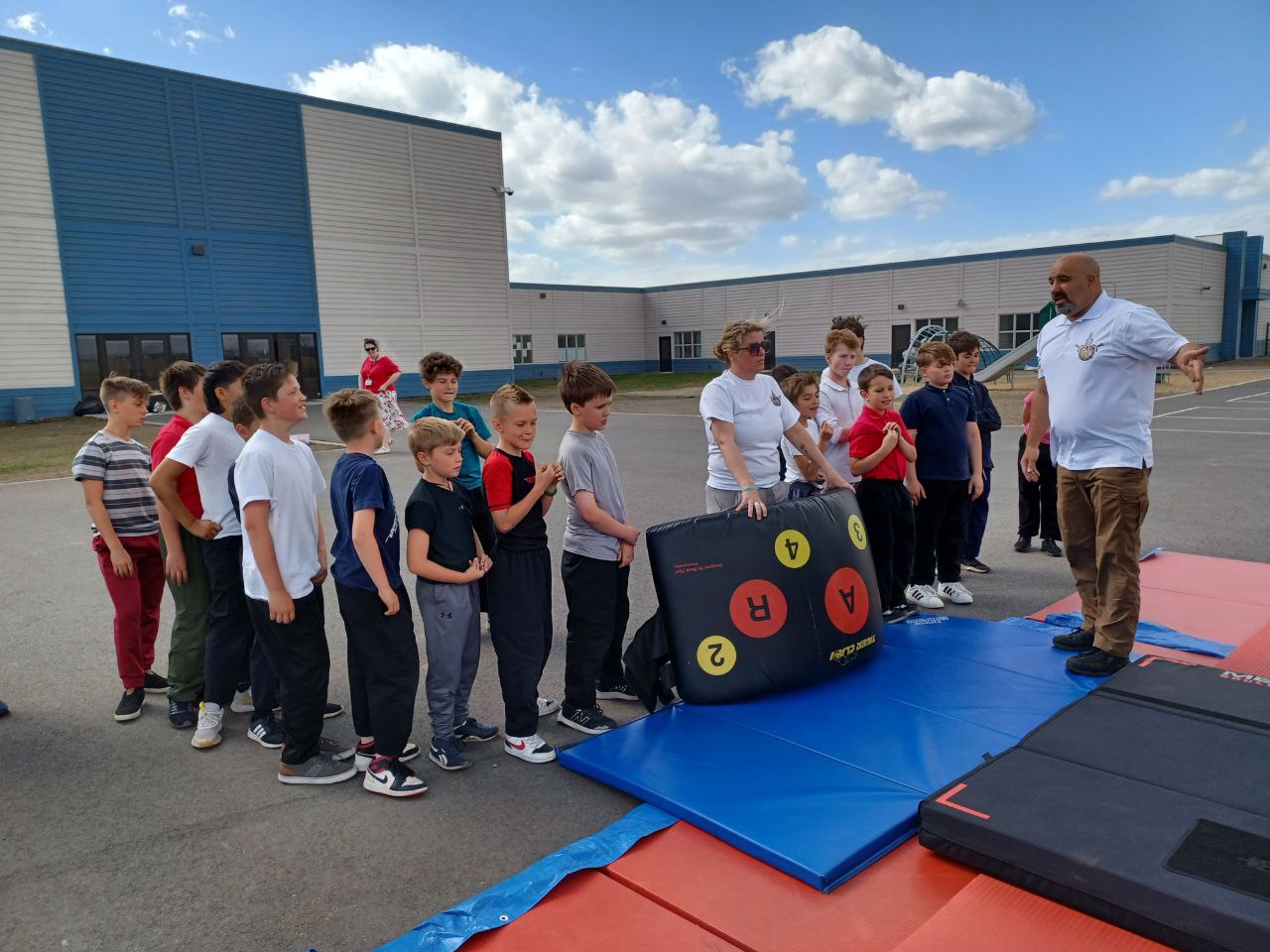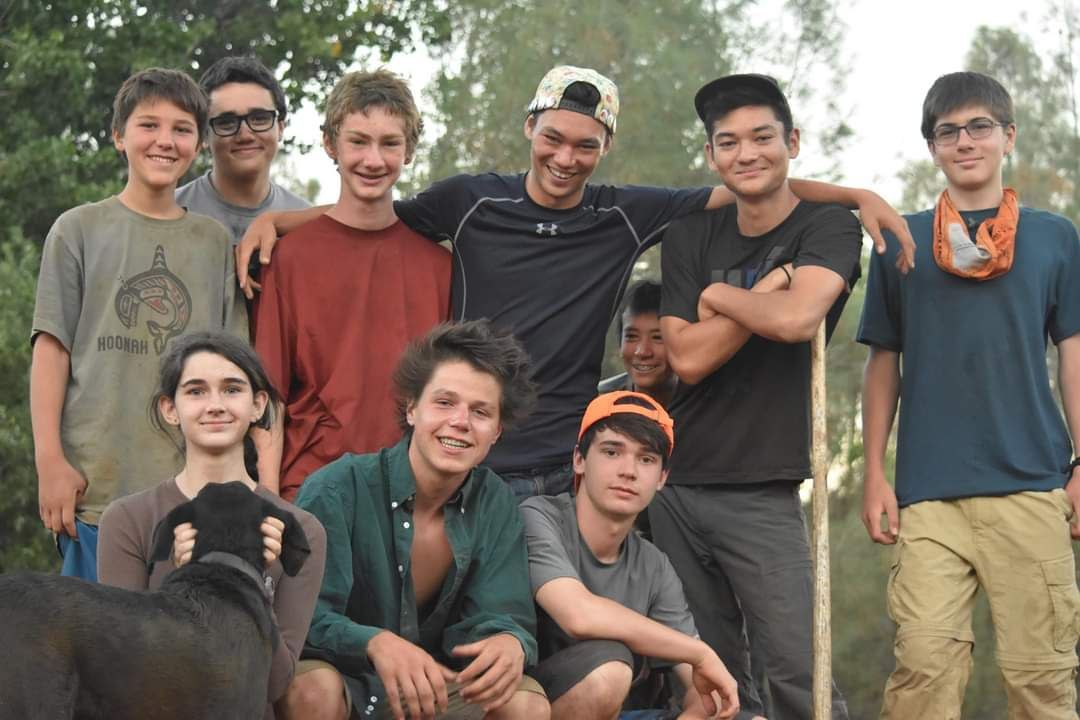POST FALLS, Idaho – Conrad Woodall takes a proactive approach to personal safety, and parents at Kootenai Classical Academy eagerly enrolled their kids in his after school martial arts program. Woodall is the school’s Director of Operations, and his program is unlike others as students are placed in realistic scenarios to practice their self-defense skills.
On a windy Thursday afternoon, 20 students took turns practicing how to save themselves from abduction. They were taught how to use specifics techniques to keep themselves from being placed into a vehicle, how to quickly remove themselves from a vehicle, how to escape from the trunk of a car, and how to exit a moving vehicle.
Before they role-played various abduction scenarios, the students watched an hour-long video of real incidents from security cameras that depicted countless successful abduction escapes, including one of a young mother who jumped from a moving vehicle while holding her infant child.
“Fear is housed in the unknown,” stated Woodall. “That is why we practice reality-based self-defense, so they know what to look out for and how to respond quickly. ”
A constant refrain was used throughout the afternoon of training – “Don’t be taken to a secondary location.” This phrase was reiterated countless times by Woodall’s wife, Becky, who worked with students on ways to extricate themselves from a trunk or seat of a car. Becky went through Woodall’s intensive training herself, earning a black belt after years of practice and dedication, and assists him with training sessions.
During the course of training, students were encouraged to shout and scream to draw attention from anyone nearby.

Since trunks are dark, students learned how to find the compartment that contains the taillight by touch, using a hand-over-hand technique. The goal is to pull the wires out to extinguish the taillight and possibly bust out the plastic cover to wiggle their fingers out the back to catch the attention of passing motorists. They were instructed on how to find and pull the glow-in-the-dark handle found in some sedans to open the trunk and how to properly drop their body and roll out while the vehicle is moving.
With the aid of a rented van, Woodall taught the students how kinetic energy can be used to their advantage. When the van brakes, push the abductor toward the front. When the van turns right, push the abductor to the left. The students worked in pairs to role-played being both the victim and the abductor while the van braked and made turns at low speeds. Many students were surprised to see how easily a small body could manage to move a much larger body with momentum created by the van.


Due to witnessing the affects of violent assaults as a police officer on the streets of California, Woodall has an intimate knowledge of how abductions and assaults take place, and how to mentally and physically train to survive them. He reminds everyone to be prepared for pain, “Don’t care about broken bones, if you are taken, odds are you aren’t coming back.”
With his forensic psychology training, Woodall is able to incorporate a unique level of mental preparation into his training for children, teens, and adults. In an abduction situation, Woodall says the primary goal is to stay on-site and not be moved. This requires awareness, quick action, and knowledge of what to do, hence, reality-based training. The process is known as stress inoculation. Stress can shut down one’s ability to respond, so mimicking real-life scenarios builds up an ability to overcome the initial fear. “The longer it takes to respond, the more advantage for the attacker,” Woodall coached the students.


After 17-year-old Ella Woodall, who has extensive martial arts training, demonstrated the proper technique to minimize injury, students were able to practice how to jump and roll out of a moving vehicle.
In addition to training with effective techniques, Woodall made sure to debunk bad advice circulating the internet so his students would understand what not to do. One such anti-abduction video instructs a child to wedge themselves into the door jam of a car and even anchor themselves through the door frame if the window is rolled down. Woodall demonstrated how dangerous this advice can be by placing a watermelon in the door jam and closing the door. This showed how easy it would be for an abductor to bust a child’s rib or break their arm. Woodall reminded the students that abductors do not care if they injure you.
At the end of the two hour training session, Woodall asked the students what they had learned.
“Do whatever it takes to get away.”
“Bumps and bruises are not a big deal.”
“It can happen at any time.”
Woodall believes this level of mental and physical training can save people of all ages from abduction, and cautions a high awareness of one’s surroundings. “Parking lots and gas stations are the most dangerous,” Woodall warned the students. The recent abduction attempt of a 6-year-old girl in the St. Vincent De Paul parking lot in Coeur d’Alene emphasizes the timeliness and importance of Woodall’s training.







